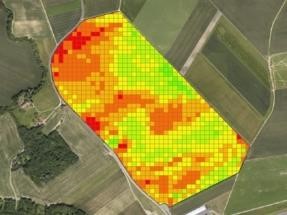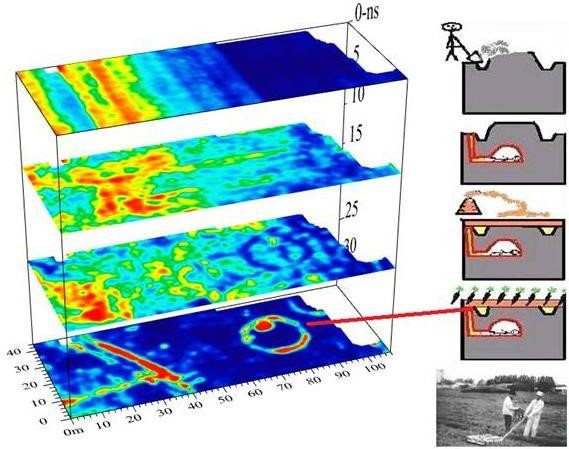-
Name (Acronym)Inverse Problems and Electromagnetic Diagnostics for Environment (IPEDE)
-
ECTS6
-
Contact E-mailandrea.massa@unitn.it
-
Teacher
-
Institution
-
Study Program
-
Degree
-
LanguageEnglish
-
Tracks
ABSTRACT
The course explores the principles and applications of inverse problems and electromagnetic diagnostics and imaging in environmental science and engineering. Students will learn about the theoretical foundations of inverse problems, various electromagnetic diagnostic techniques, and their applications in environmental monitoring and assessment problems. The classes consist of theoretical/application lessons aimed at the presentation of the state of the art of the subject and the in-depth study of innovative diagnostic techniques as well as their employment in different environmental contexts through the use of ELEDIA software tools.COURSE CONTENT
Part 1: INTRODUCTION TO INVERSE PROBLEMS FOR EM DIAGNOSTICS AND IMAGING
- The problems of detection and electromagnetic diagnostics
- Forward problem and inverse problem
- Addressing the solution of inverse problems through a two-step approach: estimation problems and appraisal problems
- Characteristics of an inverse problem: non-linearity and ill-posedness
- The importance of data collections and information adding for dealing for dealing with non-linearity and ill-posedness
Part 2: METHODOLOGIES FOR THE SOLUTION OF EM DIAGNOSTICS PROBLEMS
- Methods using information on the physics of the problem
- Approaches exploitation other a‐priori information on the solution
- Iterative information‐acquisition techniques
- Techniques exploiting the availability of input‐output examples
Part 3: APPLICATIONS IN ENVIRONMENTAL DIAGNOSTICS AND IMAGING
- Electromagnetic diagnostics of environmental eco-systems
- Groundwater monitoring
- Soil mapping and assessment
- Climate change studies
- Natural hazard assessment


TEACHING ACTIVITIES
- Theoretical Lessons
- e-Xam Self Assessment (each teaching class or periodically)
- MATLAB Hands-On
- e-Xam Final Assessment
FURTHER READINGS
- M. Bertero and P. Boccacci, “Introduction to Inverse Problems in Imaging”, IoP Press, 1998.
- D. Colton and R. Kress, “Inverse Acoustic and Electromagnetic Scattering Theory”, Springer-Verlag, 1998.
- G. Franceschetti, “Electromagnetics Theory, Techniques, and Engineering Paradigms”, Kluwer Academic/Plenum Publishers, 1997.
- W. C. Chew, “Waves and Fields in Inhomogeneous Media”, Oxford University Press, 1996.
Course Information
| Date: | 4 November ‐ 15 November 2024 (2 weeks, 30 hours/week) |
| Format: | The course is offered in blended form (onsite and online) |
Registration Information
| UniTN Students: | Free |
| EXTERNAL Students: |
216 Eu: First course 180 Eu: Every course from the second one |
The fees include the course teaching, the slides/material, and the video recordings.
Registration Procedure for UniTN Students
Please contact the Student Support Office of your Department/Centre/School to include the course in your study plan.
Registration Procedure for EXTERNAL Students
Step 1: Register a "guest" type account (@guest.unitn.it)
- Should you still not have a UniTN account, you have to register and log in with your SPID identity or CIE (electronic ID card). If you cannot use SPID or CIE, please create your own UniTN account.
Step 2: Enroll to a Single UniTN Course
-
Complete the online application through the webpage apply for enrollment in ‘Standard’ single classes a.y. 2023/2024.
Your application will be automatically considered for the a.y. 2024/2025.
In the application form (Section "Teaching Activities") put the following information:- Name of single class/teaching activity: Inverse Problems and Electromagnetic Diagnostics for Environment
- Code of single class/teaching activity: 140726
- Degree course to which the teaching activity is associated: [0332H] Ingegneria per l’Ambiente e il Territorio
- Once received the outcome of the application (1-3 days), login into ESSE3 with your "guest" account user-name and password. Then, pay the bulletin you find in Administrative Office – Payments.
NOTES:
- A vademecum with a step-by-step guide to enroll to a single course at the University of Trento is available here
- For any question on the registration process, please write to contact@eledia.org
